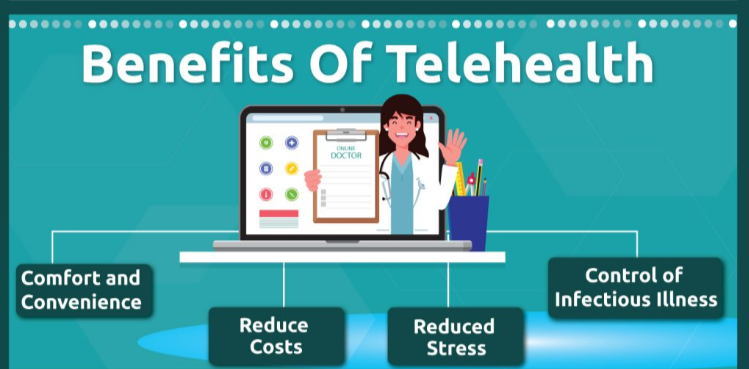(Akiit.com) Telehealth has revolutionized the healthcare industry by providing convenient and accessible medical care to patients. With telehealth, patients can connect with healthcare providers via video conferencing, phone, or messaging, eliminating the need for in-person visits. It is particularly beneficial for patients who live in remote areas or have mobility issues.
Telehealth technology has also helped reduce the burden on hospitals and clinics by providing alternative modes of care. It allows healthcare providers to monitor patients remotely, check vital signs, and prescribe medication. Patients can also receive mental health counseling and other services that do not require physical examinations.
The COVID-19 pandemic has further highlighted the importance of telehealth, as it has enabled patients to receive medical care while maintaining social distancing. Telehealth has become an essential tool for healthcare providers to continue providing care while minimizing the risk of infection.
Here are a few ways telehealth is proving to be effective in cost-effectively providing patient care:
Reduced transportation costs
One of the biggest advantages of telehealth is that it eliminates the need for patients to travel to healthcare facilities, reducing transportation costs associated with traditional in-person care. Telehealth allows patients to access medical consultations, diagnosis, and treatment from the comfort of their homes, reducing the need for costly transportation.

Improved efficiency
Telehealth can improve the efficiency of healthcare delivery, reducing costs associated with traditional in-person care. With telehealth, healthcare providers can see more patients in less time, reducing the need for costly office space and staff. Telehealth also allows healthcare providers to easily access patient records and communicate with other healthcare providers, improving coordination and reducing the need for duplicate testing and treatments.
Reduced hospital readmissions
Telehealth can reduce the need for hospital readmissions, which are costly for both patients and healthcare providers. Telehealth allows patients to receive medical care and monitoring from their homes, reducing the need for hospitalization.
Remote monitoring of patients with chronic conditions like CHF and COPD can help detect and address health issues before they become serious, reducing the likelihood of hospitalization.
Improved preventative care
Telehealth can improve the delivery of preventative care, reducing the likelihood of expensive emergency medical interventions. Telehealth allows patients to receive regular check-ups, screenings, and follow-up care, reducing the likelihood of serious health issues developing. Telehealth can also help patients manage chronic conditions, reducing the likelihood of expensive complications and hospitalization.
A patient suffering from Chronic Heart Failure needs consistent monitoring which can be enabled through RPM devices. Any changes in the physiological conditions are immediately picked up and corrective recourse is taken.
How to implement a good telehealth platform?
Hospitals can make their telehealth platform more effective by taking the following steps:
- Invest in user-friendly technology
The telehealth platform should be easy to use for both patients and healthcare providers. The technology should be reliable, secure, and user-friendly.
- Train healthcare providers
Healthcare providers should be trained to use the telehealth platform effectively. This includes training on how to navigate the technology, how to conduct virtual consultations, and how to document patient information.
- Promote the platform to patients
Hospitals should actively promote their telehealth platform to patients. This includes educating patients on how to use the platform, the benefits of telehealth, and how to schedule virtual appointments.
- Ensure privacy and security
Hospitals should ensure that their telehealth platform is secure and complies with HIPAA regulations. This includes using encryption technology, implementing two-factor authentication, and conducting regular security audits.
- Offer technical support
Hospitals should provide technical support to patients who may have difficulty using the platform. It can include offering assistance with setting up the platform and troubleshooting technical issues.
- Collect feedback
Hospitals should collect feedback from patients and healthcare providers to continuously improve the telehealth platform. This includes asking for feedback on the user experience, the quality of care provided through telehealth, and suggestions for improvement.
Conclusion:
Investing in a telehealth platform is a healthcare requirement that needs to be implemented after proper calibration for a seamless workflow. It is possible to optimize the systems when the telehealth service provider can provide customized solutions to meet the specific requirements of a hospital or a clinic. Any initiative that reduces healthcare costs prevents diseases, and promotes health is welcomed by all the stakeholders equally.
Staff Writer; Roy Davis









Leave a Reply